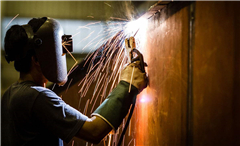Income for skilled workers, tax reform among topics
2018-04-03
China Daily
Over the past week, the Ministry of Human Resources and Social Security, the Ministry of Science and Technology as well as the State Administration of Taxation, participated in a series of policy briefings and answered questions related to public concerns, such as improving income for skilled workers, newly approved green piloting cities and how steps on tax reform will help to ease the burden for enterprises.
Benefits and status improved
State-owned enterprises should play a leading role in improving the treatment of skilled workers, especially highly skilled talent, Tang Tao, vice-minister of the Ministry of Human Resources and Social Security, said during a policy briefing on March 25 regarding the State Council’s new policy on improving salaries for skilled workers.
On March 22, the general offices of the Communist Party of China Central Committee and the State Council jointly released a guideline calling for more incentives for skilled workers by raising their status, incomes and social benefits.
Tang said during the briefing that China has a working population of 776 million, while 165 million of these are skilled workers, and only 47 million people are “highly skilled workers”. Tang added that this has produced a serious imbalance between demand and supply in the labor market.
Factors such as low incomes, unsatisfactory welfare benefits and poor social status associated with skilled positions, are to be blamed, he said.
He said the ministry is now communicating with the State-owned Assets Supervision and Administration Commission on improving the treatment of highly skilled workers.
According to the new guideline, State-owned enterprises’ gross payrolls should lean toward highly skilled workers, and average salary increases shouldn’t be lower than those for administrative staff. As for increasing all skilled workers’ benefits, the guideline encouraged companies to establish salary systems that can reflect job value, personal ability and work performance. It also advised employers to subsidize complementary allowances for technicians.
Cities for green pilot trials
China will begin testing innovative solutions on clean energy, ecological protection, urban development and other fields related to sustainable development in three pilot cities, Xu Nanping, vice-minister of science and technology, said on March 23.
The three cities are Shenzhen in Guangdong province, Taiyuan in Shanxi province and Guilin in the Guangxi Zhuang autonomous region. The results will provide invaluable knowledge for achieving nationwide sustainable growth by 2030. These cities are the first of the 10 national demonstration zones for sustainable growth planned by the State Council in its 2030 Agenda for Sustainable Development published in 2016.
The plan is also part of a global effort spearheaded by the United Nations since 2015 to eradicate poverty worldwide and achieve sustainable development by 2030.
“These three cities represent different paths of regional development, but they also share many typical and common challenges with other regions when pursing sustainable development goals,” Xu said.
“By testing new technologies and innovative solutions in these pilot zones, China hopes to replicate local success nationwide and even offer Chinese wisdom to help other countries achieve sustainable development,” he said. “We hope to use technology and innovation to improve city management and solve these issues.”
By 2020, Shenzhen aims to be a global innovation hub, and a world-leading model city for innovation and sustainable development by 2035, he added.
Enterprises get boost
Newly announced measures, such as cutting value-added tax rates, as part of a tax reduction package this year, are expected to ease enterprises’ tax burden of nearly 400 billion yuan ($63.62 billion), or half of the annual tax cut plan, and producers would benefit the most from the reform, Wang Jianfan, director-general of the Ministry of Finance’s tax policy department, said during a news conference on March 30.
The State Council’s executive meeting on March 28 decided that China will cut value-added tax rates as part of a tax reduction package amounting to 400 billion yuan this year to drive high-quality development.
According to the reform plan, the tax rate for manufacturing will be lowered from 17 percent to 16 percent, and for transportation, construction, basic telecommunications services and farm produce from 11 percent to 10 percent.
In order to support small and micro-sized companies, a national financing guarantee fund will be initiated by the central government, with an initial amount of at least 60 billion yuan, according to finance ministry officials.


